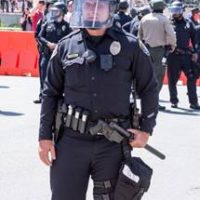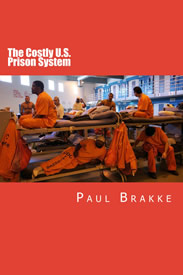Why There Is a Wrong Perception about the Number of Shootings of Citizen By Cops
The Real Number is Much Lower
 Today, there is an apparent uptick in the number of fatal shootings of citizens by cops. However, as discussed in my book Cops Aren’t Such Bad Guys, this impression is not accurate, since publicity about individual shootings has been fanned by the media and the Black Lives Matter movement. Moreover, the perception is that the cops have wantonly engaged in these killings, using racial profiling to target African-Americans, who are the major victims in these shootings. Subsequently, after the officers involved have been cleared of wrongdoing as a result of administrative hearings and trials, the perception is that the criminal justice system is corrupt in letting guilty officers off because the system is wrongly protecting them. The result has been the further impression that the exoneration of these officers reflects a system-wide bias against African-Americans, which has fueled further protests supporting the Black Lives Matter movement and has contributed to the growing divisiveness in U.S. society today.
Today, there is an apparent uptick in the number of fatal shootings of citizens by cops. However, as discussed in my book Cops Aren’t Such Bad Guys, this impression is not accurate, since publicity about individual shootings has been fanned by the media and the Black Lives Matter movement. Moreover, the perception is that the cops have wantonly engaged in these killings, using racial profiling to target African-Americans, who are the major victims in these shootings. Subsequently, after the officers involved have been cleared of wrongdoing as a result of administrative hearings and trials, the perception is that the criminal justice system is corrupt in letting guilty officers off because the system is wrongly protecting them. The result has been the further impression that the exoneration of these officers reflects a system-wide bias against African-Americans, which has fueled further protests supporting the Black Lives Matter movement and has contributed to the growing divisiveness in U.S. society today.
However, these impressions and perceptions are misleading, because they don’t take into account the difficulties which the police face, as described in extensive online research and an interview with Lance LoRusso, an attorney in Georgia, who represents police officers in administrative, criminal, and civil hearings. LoRusso has written two books about fatal shootings by cops: When Cops Kill and Blue News
What the Stats Show about Police Killings
 First, the number of citizens killed by police officers each year and the number of police killed on duty put the lie to the first perception that the bulk of these deaths are caused by out-of-control police officers who are racially biased against African-Americans, so they are more likely to shoot them. The media focus on a few big incidents, such as a series of deaths by anti-police snipers and terrorists, give the impression that the police are under siege, while other stories highlight some of the latest killings by police to suggest that the police are targeting more victims.
First, the number of citizens killed by police officers each year and the number of police killed on duty put the lie to the first perception that the bulk of these deaths are caused by out-of-control police officers who are racially biased against African-Americans, so they are more likely to shoot them. The media focus on a few big incidents, such as a series of deaths by anti-police snipers and terrorists, give the impression that the police are under siege, while other stories highlight some of the latest killings by police to suggest that the police are targeting more victims.
So what is the most accurate picture? According to the National Law Enforcement Officers Memorial Fund, in 2015, 123 officers died in the line of duty, a number generally in line with previous years, and in the last four years, 40-50 officers were “shot, stabbed, strangled or beaten to death each year.” Overall more cops are not being killed in the line of duty, although more of those being killed may be the victims of targeted killings.
At the same time, it would seem there really has been an increase in the number of homicides by police, in part due to a better count of killings and the use of force by police officers. This increase has occurred since the unrest in Ferguson, Missouri, after the August 2014 shooting of Michael Brown led to protests and riots in the town and across the U.S.
 In brief, there has been no significant increase in the number of police killed over the last few years, although the statistics do seem to support the popular perception, fueled by the media, that there have been more killings of citizens by the police. A reason for this, according to LoRusso, is that there has been a growing tendency for citizens to resist the authority of the police, which leads to escalating conflict in police-citizen encounters. As he pointed out, “More people engage in confrontations with the law in which suspects escalate the situation. They won’t put up their hands, they won’t respond to an officer’s commands, or they fight back, like in the situation with Eric Garner.”
In brief, there has been no significant increase in the number of police killed over the last few years, although the statistics do seem to support the popular perception, fueled by the media, that there have been more killings of citizens by the police. A reason for this, according to LoRusso, is that there has been a growing tendency for citizens to resist the authority of the police, which leads to escalating conflict in police-citizen encounters. As he pointed out, “More people engage in confrontations with the law in which suspects escalate the situation. They won’t put up their hands, they won’t respond to an officer’s commands, or they fight back, like in the situation with Eric Garner.”
Then, too, LoRusso observed that the “war on the police is real,” in describing some of the situations in which officers are fired upon and attacked by individuals from different circumstances, both from the inner city and rural environments. To a great extent, these situations are due to ambushes which are actually rare occurrences – only 21 in 2015, but they have been a key factor in increasing fear among the police and the call for more law and order by fearful citizens. Additionally, this hostility to the police would seem to be not only from Black Lives Matter members and other activists, since some protests have included not only blacks but other groups. For example, LoRusso described how in one protest in Texas, a mix of individuals from different racial groups chanted “Dead cops now,” while in another case, a group of Black Panthers assembled who were calling for the death of cops.
Unfortunately, the media help to give voice to these protests and calls for the death of cops, which contributes to fueling further protests and hostility to the police. This hostility then exacerbates the confrontations when the police try to make an arrest, which can lead to an increase in both killings by police and further citizen attacks on the police.




